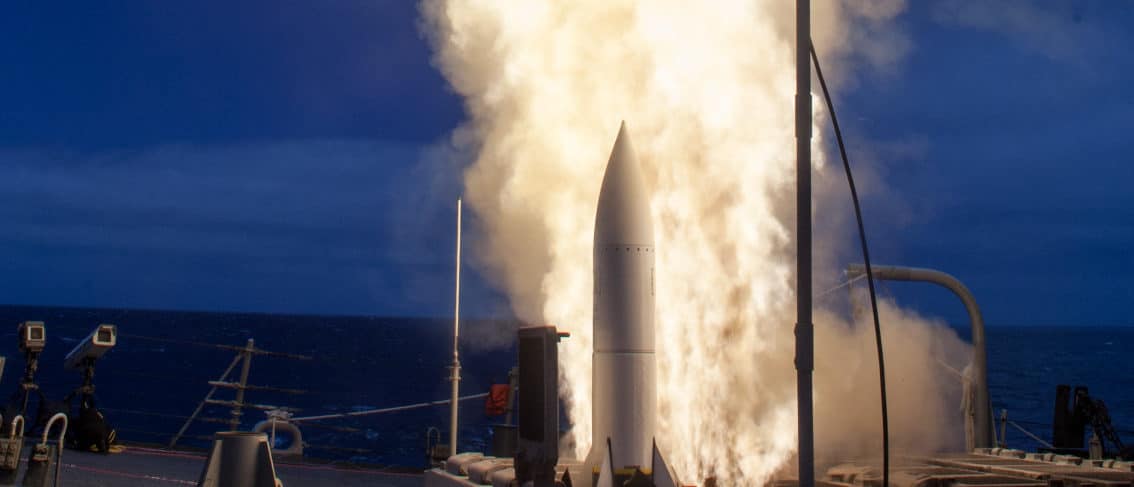Several recent tests suggest progress for both ballistic and cruise missile defenses.
On June 22, a Ground-based Interceptor (GBI) successfully destroyed a long-range target high above the Pacific. As the only system for homeland missile defense, the GBI test represents a welcome departure from three past intercept failures in 2010 and 2013, which involved both older CE-1 and newer CE-2 kill vehicles. Immediately, the intercept paves the way for improving the CE-2. In the coming months, we may also expect details on the Missile Defense Agency’s plans to further develop and test the CE-2 in time for 14 additional interceptors scheduled for 2018, sketch out the medium term redesign, and begin to conceptualize a next-generation, volume-kill interceptor.
A less-reported but interesting recent series of tests concern the new SM- 6, a system designed to defend against cruise missiles, aircraft, and—quite interestingly—short-range ballistic missiles. The SM-6 essentially consists of parts from three other systems: the front end of an AMRAAM, an SM-2 airframe, and the longer-range booster from an SM-3.
In June, ship-borne SM-6s were launched against three different cruise missile threats, destroying all three. Comparatively less attention typically goes to cruise missile and antiship threats, which have hitherto been seen as difficult to defeat. Recent developments include increased Chinese coastal deployments, allegations of a Russian ground launched cruise missile in violation of the Intermediate Range Nuclear Forces Treaty, and reports that NORTHCOM and MDA are looking carefully at cruise missile defenses for the continental United States. SM-6 has been deployed aboard ships since December 2013, but need not be so limited. If threats develop, SM-3 Aegis Ashore European deployments could conceivably be supplemented with cruise missile defenses.
Notably, a fourth SM-6 test successfully intercepted a higher-velocity and higher-altitude target capable of simulating ballistic trajectories— presumably part of SM-6’s sea-based terminal defense mission. This test certainly brings to mind the Chinese DF-21D ballistic missile, a +1500-kilometer-range antiship carrier killer with a maneuverable warhead. Seen to threaten U.S. naval projection, DF-21D represents part of China’s anti-access/area-denial efforts. SM-6 and other defenses may prove quite welcome.
